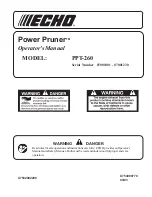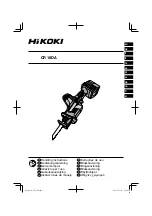
25
B. If blade is not square to table...the
90° stop screw must be adjusted.
1. Use a 3/16" hex “L” wrench to
unscrew the 90° stop screw until it
is flush with the top of the table.
2. Turn tilt handwheel clockwise one
turn, then turn handwheel counter-
clockwise until blade is square
with table.
3. Screw 90° stop screw in until the
sawblade starts to move. Check
once again for squareness and
readjust screw, if necessary.
4. Check pointer as described in step
A.
To check for alignment, 45° Position
1. Tilt blade to left as far as it will go.
2. Place an accurate square against
blade. Make sure square is not touch-
ing the tip of one of the saw teeth.
A. If blade is 45° to table;
1. Check pointer. If pointer does not
point to the 45° mark on the scale,
the scale must be adjusted.
a. Remove elevation handwheel.
b. Loosen two screws on scale
and adjust scale up or down
until pointer points to 45° mark.
c. Install elevation handwheel.
B. If blade is not 45° to table, stop
screw and scale must be adjusted.
1. Use a 3/16" hex “L” wrench to
unscrew the 45° stop screw until it
is flush with the top of the table.
2. Turn tilt handwheel until blade is
45° to the table.
3. Screw 45° stop screw in until the
sawblade starts to move. Check
once again and readjust screw, if
necessary.
4. Check pointer as described in step
A above.
Checking Tilt Mechanism
With tilt lock handle loosened, the hand-
wheel should turn freely without binding.
The turning friction can be adjusted by
tightening or loosening the screws in the
bearing retainer.
NOTE: Tilt handwheel must be removed
to adjust. When adjusting the screws in
the bearing retainer, hold the nut inside
using a 3/8 inch wrench.
90°
Stopscrew
45°
Stopscrew
Scale Screws
Retainer Bearing
Tilt
Handwheel
Screws
(Inside Base)
















































